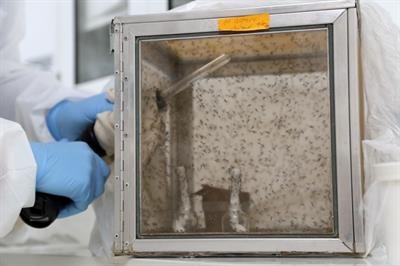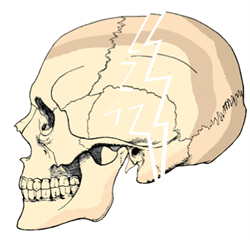 Dr. Ping Wu, PhD,
Dr. Ping Wu, PhD, professor of Neuroscience and Cell Biology, and
Nikos Vasilakis, PhD, associate professor of Pathology, have uncovered the mechanisms that the Zika virus uses to alter brain development. While a Zika infection typically results in mild or symptom-free infections in healthy adults and children, the risk of microcephaly in the developing fetus is an alarming consequence that has created a worldwide health threat. Since a normal brain develops from stem cells that are able to develop into various types of cells, the UTMB team deduced that microcephaly is most likely linked to abnormal function of stem cells. The researchers established a method of investigating how Zika alters the production, survival and maturation of brain stem cells using cells donated from three human fetal brains. “We discovered that the Zika virus halted the production of brain stem cells and hindered their ability to develop into brain nerve cells,” said Wu. “However, the effect of the virus on the ability of stem cells to develop into specialized cells differed between donors. This difference seems to be linked to a Zika-induced change in global gene expression pattern however, it remains to be seen which genes are responsible. Wu added, “The unique system containing stem cells from three donors will allow us to dissect molecular mechanisms underlying Zika virus-induced brain malformation.” Two weeks after the cells had developed into a certain type, Vasilakis said they discovered that the Zika infection was mainly found in glial cells, which provide support and insulation for the brain. This study was published in Stem Cell Reports.
 Wenbo Zhang, PhD,
Wenbo Zhang, PhD, associate professor of Ophthalmology and Visual Sciences, has shed new light on what causes permanent vision loss following a head injury. When someone suffers a head trauma, there can be damage to the optic nerve, which is responsible for passing information between the eyes and the brain. When the optic nerve is injured, there are tears and swelling in the affected area that causes the nerve cells to die. This type of injury is called traumatic optic neuropathy, or TON, and results in irreversible vision loss. At this point, there is no effective treatment for TON and the mechanisms of the optic nerve cell death have been largely unclear. Zhang and his team found that inflammation brought on by white blood cells play a role in head trauma-induced vision loss. Limiting inflammation could decrease nerve damage and preserve cell function, researchers discovered. Inflammation is part of the body’s defense system against injury and infection and is an important component of wound healing. White blood cells travel to injured areas to help repair the damaged tissue, causing inflammation in the process. Excessive or uncontrolled inflammation can actually make injuries worse and contribute to disease. “Our data clearly showed that a certain protein receptor on white blood cells brings them to the optic nerve when it has been damaged,” said Zhang. “When we deleted this receptor or gave mice a drug that blocks the receptors after optic nerve damage, we saw fewer white blood cells on the scene.” Thus, nerve damage was decreased and nerve cell function was preserved compared with mice that did not receive any intervention following injury.” The findings are detailed in The American Journal of Pathology.
 Kathryn Cunningham, PhD,
Kathryn Cunningham, PhD, director of the UTMB Center for Addiction Research and professor of Pharmacology and Toxicology, has confirmed that lorcaserin, a commercially available weight-loss medication, reduces drug-seeking behavior in rats that had been self-administering oxycodone, an opiod pain killer. According to the US Centers for Disease Control and Prevention, the number of deaths in the US from opioid overdose has quadrupled since 1999. Most of the treatments available to reduce drug use work by occupying opioid receptors, so that if someone were to take an opioid while on the medication, they would not feel the signature euphoria as strongly. However, a person’s drug-taking environment is a powerful cue that can elicit drug craving. People who have tried the currently available medications often relapse when they are around the people, places or paraphernalia they associate with opioid use. Cunningham and her team trained rats to self-administer oxycodone while exposed to specific lights and sounds, creating a drug-taking environment. Once the drug-seeking behavior was well established, some of the rats were given lorcaserin and the rest were given a placebo.The lorcaserin rats self-administered less oxycodone and reacted less strongly to cues associated with taking the drug. “These results highlight the therapeutic potential for lorcaserin in the treatment of opioid use disorder,” said Cunningham. The study is currently available in ACS Chemical Neuroscience.
Compiled from press releases written by Donna Ramirez. Find out more at www.utmb.edu/newsroom.